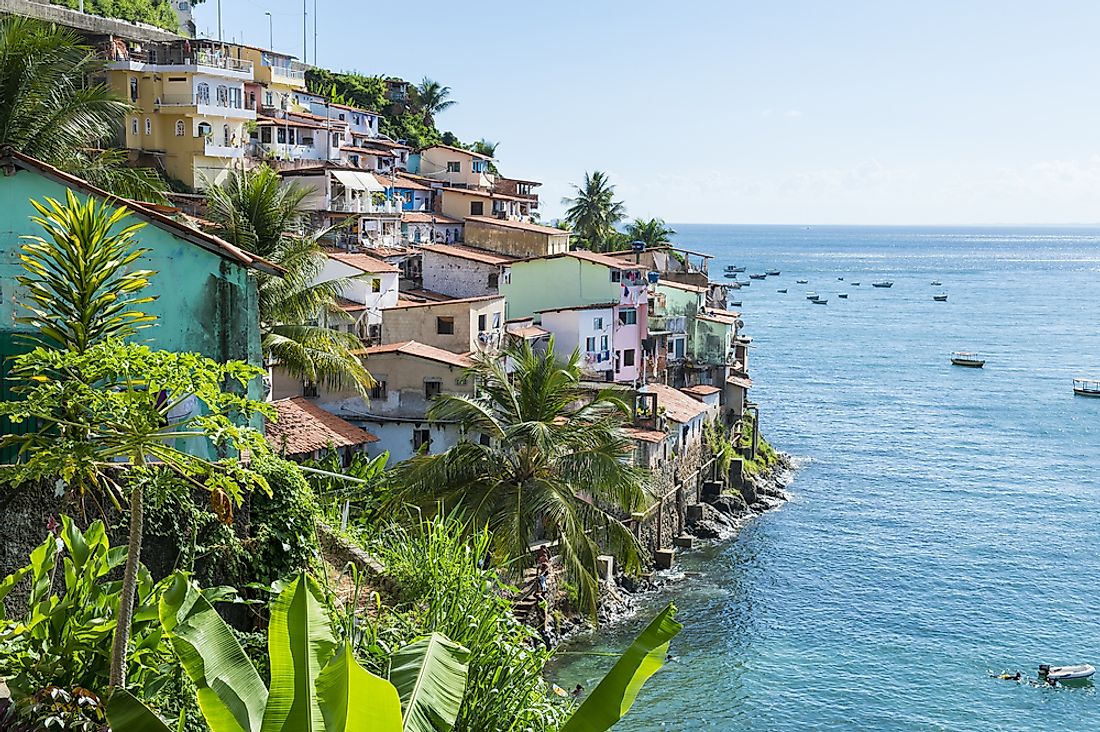Salvador, Brazil - Unique Places Around the World

The South American state of Brazil is a popular destination for tourists. It is a nation known for its soccer prowess, and in 2014 it hosted the soccer World Cup. It has a long coastline filled with magnificent beaches that attract millions of tourists each year. Christ the Redeemer, the famous statue of Jesus, is also located in Brazil. Tourists also flock to cities and towns, among them is the city of Salvador in Bahia. This article discusses the city of Salvador.
5. Description
Salvador is the third largest city in Brazil after Sao Paulo and Rio de Janeiro. It is sometimes referred to as Sao Salvador and has a population of about 2.95 million people. Salvador is a port city and the capital of Bahia state. It is among the oldest cities in Brazil and in the mid-16th century it was the capital of Brazil under the Portuguese. Today the city is an important export hub for tobacco, sugar, aluminum, textile and many more goods manufactured in Brazil. It is well served by shipping lines, road, and rail. An international airport located 12 miles from the city center ensures that tourists can make direct flight. Salvador is divided into the upper and lower parts which consist of the commercial district, port, and minor residential zones while the upper part consisting of the main shopping districts, federal and state offices, and several major residential zones. It is the third most populous city with 46.7% male and 53.3% female. A 2015 autosomal DNA revealed that about 50% of the people in the city are of African ancestry while 42% had European ancestry.
4. Habitat
Salvador is the third most populous city in Brazil after Rio de Janeiro and Sao Paolo. It is inhabited by about 2.95 million people. The city’s original design was created by Portuguese engineer Luís Dias, and since then the city has grown spontaneously. It is divided into a number of neighborhoods with the most popular being Pelourinho, Old Downtown, and Comércio. Farol da Barra and its beaches in the southern part of Salvador are recognized as the origin of Carnival circuits. It is home to several Spanish and Portuguese hospitals. Most of the city's high rise buildings are located in the southern zone of the city in Victoria. Campo Grande and Bahia’s independence monumental are also located in the southern part of Salvador. The residential area of Graca and the Zoobotanical Garden are also located in the southern part of the city. The neighborhood of Rio Vermelho in the south zone is rich in architectural history and modern bars and restaurants. The Lower City (Cidade Baixa) in the Northwest area along the Bay of All Saints houses the impoverished suburban that are inhibited by a large proportion of Afro-Brazilians.
3. Uniqueness
Salvador is among the oldest cities in Brazil. In the mid-16th century it was under the rule of the Portuguese before it was captured by the Dutch in 1624 and recaptured by the Portuguese a year later. In July 1823, the Portuguese surrendered Salvador to Brazil. Each of these events marked an important and unique part of the Brazilian history, including the construction of a monument to commemorate the Brazilian victory over the Portuguese and the many distinctive foods, folkways, and costumes found in the city. The two sections of the city are also connected by several escalators, a funicular rail, and winding roads. The Lacerda elevator is the city landmark and links the lower and upper streetcar systems by lifting passengers 234 feet. Salvador is majorly a Christian city, and several Baroque colonial churches are located within the city, including the Third Order of St. Francis that dates back to 1701. Several colonial secular architectures such as the Barra lighthouse and several 17th-century forts are distinct to the city. The sacred art in the monastery of Santa Tereza are also displayed in one of the many museums located in Salvador. The home of the famous writer Jorge Amado has been conserved and converted into a museum displaying his work.
2. Tourism
Salvador is served by an international airport and a port that includes a yacht harbor. These facilities are a perfect fit for tourists who flood the city all year round. Over the years tourism has developed to become as significant component of the city’s economy, and the historic sites and beaches are some of the most visited parts. In 1985, UNESCO designated the old city center (Pelourinho) at the edge of the city a World Heritage site. In the late 20th century several historic building in the center underwent reconstruction, and several buildings were restored. The Salvador coastline houses more than 50 miles of sandy beaches including the most expensive bay in Brazil. Shopping malls, including the Salvador mall, Shopping Barra, and Shopping Iguatemi allow tourists to view and buy exotic Brazilian made goods, particularly textiles. The four parks: Park of the City, Jardim dos Namorados, Park of Pituaçu, and Costa Azul Park allow locals and tourists to spend leisure time with their families and friends while enjoying the natural scenery.
1. Threats
Just like other cities in Brazil, Salvador is experiencing a high rate of crime. In 2016 it was ranked the third most violent city in Brazil after Fortaleza and Natal, and the 14th most violent city in the world with 60.66 homicides for every 100,000 residents in a year. Modernization of the city is also threatening the historic features as more are brought down to accommodate modern housings. Being a port city, Salvador is at risk of the rising sea levels, tornadoes, and hurricanes due to global warming. The increase in population has led to an increase in vehicles and industries responsible for emitting hazardous gases to the environment leading to health problems among the city’s inhabitants.











